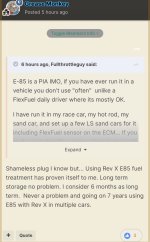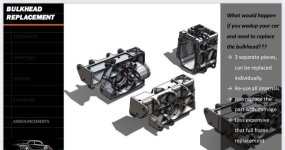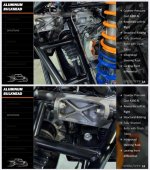Rockwood
Well-known member
- May 5, 2021
- 6,245
- 8,040
My assumption on 2 injectors is because injectors that support huge power/cylinder (like in the Speed's case) are hard to control at idle. For a buggy, no big deal since no one's putting a sniffer on the tailpipe and no cat, so if it's a little "muddy", it just makes it sound cooler. For something that needs to pass CARB inspection, 2 sets will let you get that big number with accurate fuel injection at low load.I would suspect they will have something? It’s been said that race teams running the Speed UTV will have some options that the consumer does not. Like removing the speed limiter. It’s been said the engine tuning is based around EPA standards. UTV race vehicles can remove those requirements and run richer, race fuels etc..
Yes the two tunes and E85 is measured by the same flex fuel sensors that GM is using.
Also the Speed engine uses two injectors per cylinder. So while I don’t understand the whole system, I know the power is gained by not just increasing boost & running E85 but also the way the fuel is delivered.
A little over a year or so ago when this was explained or realized, some of the factory UTV teams were starting to share their concerns with BITD & Score tech about how this might not be fair for the Production Turbo class. Both series allow aftermarket ECU tunes, but the injectors & turbos have to be factory production stock as delivered from the showroom.
I haven't seen the compressor maps for the turbski, but looking at the dyno chart and how torque stays flat until redline at low boost, but dies off at high RPM on the big power tune, I'm assuming the turbo is running out of airflow at higher RPM. Timing is almost never a problem at high rpm reliability wise, so I don't think there's much optimization left in the map.
Last edited by a moderator:




